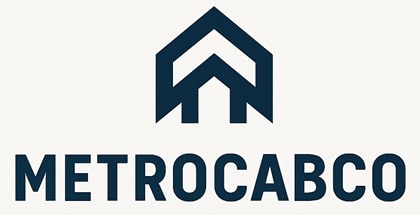Press mentions are essential for establishing authority in the AI sector. They shape public perception and enhance credibility by showcasing expertise in reputable publications. Such endorsements foster trust among potential clients and influence decision-makers. Consistent media coverage builds familiarity and helps organizations differentiate themselves within the competitive landscape. As companies engage with media professionals and leverage unique narratives, they further strengthen their position. There are many strategies that support sustained media presence and authority.
Key Takeaways
- Press mentions enhance credibility by serving as endorsements from reputable sources, establishing authority in the AI industry.
- Consistent media coverage fosters recognition and trust among potential clients, differentiating organizations from competitors.
- Features in respected publications amplify visibility and solidify industry leadership, shaping audience perception positively.
- Positive press mentions influence public opinion, driving customer loyalty and reinforcing the organization’s reputation.
- Engaging with journalists and creating timely content can attract media attention, further establishing expertise and authority in AI.
The Importance of Media Coverage in AI
As artificial intelligence continues to reshape industries and societal norms, media coverage plays an essential role in shaping public perception and understanding of these technologies. Through articles, interviews, and broadcasts, media outlets disseminate information that highlights both the benefits and challenges associated with AI.
This coverage not only informs the general public but also influences policymakers and industry leaders, guiding decisions that could impact the future of AI development. Furthermore, media narratives can either foster trust or incite fear regarding AI applications, depending on the framing of the stories.
Also Read
Building Credibility Through Press Mentions
Press mentions serve as a powerful tool for establishing credibility in the rapidly evolving landscape of artificial intelligence. By being featured in various media outlets, organizations can showcase their expertise and achievements to a broader audience.
These mentions often serve as endorsements from trusted sources, enhancing the perceived authority of the entity in question. As a result, companies that secure press coverage can effectively differentiate themselves from competitors, fostering trust among potential clients and partners.
Additionally, consistent media exposure can help build a narrative around innovation and thought leadership, reinforcing the organization’s position in the industry.
Ultimately, leveraging press mentions strategically can greatly bolster an AI company’s credibility, paving the way for further opportunities and collaborations.
The Role of Reputable Publications
While many factors contribute to an organization’s credibility in the AI sector, the role of reputable publications is particularly significant. These publications serve as trusted sources of information, providing validation and endorsement to the organizations they feature.
When an AI company is mentioned in established outlets, it gains immediate recognition and authority, distinguishing it from competitors. Articles in reputable publications often reach a wider audience, fostering trust among potential clients and partners.
Additionally, citations in respected journals can enhance a company’s perceived expertise, leading to greater opportunities for collaboration and investment.
As a result, the presence in reputable publications not only amplifies visibility but also solidifies an organization’s status as a leader in the rapidly evolving AI landscape.
How to Attract Media Attention in AI
Attracting media attention in the AI sector requires a strategic approach that leverages the credibility gained from reputable publications. Companies and individuals must establish expertise by sharing insights through blogs, webinars, and conferences, highlighting their unique contributions to the field.
Building relationships with journalists who specialize in technology can also facilitate coverage; personalized pitches that address specific topics of interest to these writers can be effective. Engaging in thought leadership, such as publishing white papers or participating in panel discussions, further enhances visibility.
Utilizing social media platforms to disseminate news and updates can amplify reach, while timely responses to emerging trends or controversies can position entities as go-to sources for commentary, ultimately attracting the desired media attention.
The Impact of Press Mentions on Audience Perception
When companies receive mentions in reputable media outlets, it often enhances their credibility and shapes audience perception greatly.
These press mentions serve as endorsements, signaling to potential customers that the company is recognized and trusted within its industry. As a result, audiences are more likely to view the company as a leader, fostering trust and encouraging engagement.
Additionally, consistent media coverage can create familiarity, making the brand more memorable. This perception is particularly essential in competitive markets where consumers rely on perceived authority to make informed choices.
Ultimately, positive press mentions can greatly influence public opinion, driving customer loyalty and enhancing the overall reputation of the company in the eyes of its target audience.
Leveraging Social Proof for Authority
Leveraging social proof is essential for establishing authority in any field.
By building trust through consistent exposure in reputable media outlets, individuals and organizations can enhance their credibility.
This process not only validates expertise but also fosters a sense of reliability among audiences.
Building Trust Through Exposure
Building trust in today’s digital landscape often hinges on the visibility and credibility established through media exposure. When organizations or individuals receive mentions in reputable outlets, they create a perception of authority and reliability.
This exposure acts as social proof, reassuring potential clients and customers of their competence and expertise. As audiences encounter consistent media mentions, they begin to associate those brands or individuals with trustworthiness.
Furthermore, this visibility can lead to increased engagement, as people are more likely to interact with entities deemed credible. Ultimately, leveraging media exposure not only enhances the perceived authority but also fosters a connection between the audience and the brand, reinforcing trust in an increasingly competitive online environment.
Enhancing Credibility With Media
As organizations seek to enhance their credibility, media exposure serves as a powerful tool for establishing authority. When businesses receive coverage in reputable publications, they signal to their audience that they are trustworthy and knowledgeable in their field.
This media presence acts as social proof, reinforcing their expertise and legitimacy. By strategically leveraging press mentions, organizations can effectively position themselves as thought leaders, attracting new customers and partners.
Moreover, consistent media engagement cultivates a perception of reliability, encouraging stakeholders to view the organization as an industry authority.
Ultimately, enhancing credibility through media not only boosts visibility but also fosters trust, enabling organizations to thrive in competitive landscapes.
Creating a Compelling Narrative for Media Outlets
How can organizations effectively capture the attention of media outlets? By crafting a compelling narrative that resonates with both journalists and their audiences. A strong story begins with a clear message highlighting the unique aspects of the organization or its innovations. Incorporating human elements, such as customer testimonials or personal anecdotes, can increase relatability.
Organizations should also align their narrative with current trends and societal issues, demonstrating relevance. Visual elements, like infographics or videos, can enhance engagement and make stories more shareable.
Additionally, presenting data or research findings supports credibility while providing journalists with valuable content. Ultimately, a well-structured narrative that captivates the media’s interest can lead to increased visibility and authority in the competitive landscape of public relations.
Measuring the Impact of Press Mentions
Although press mentions can considerably enhance an organization’s visibility, measuring their impact requires a strategic approach. Organizations must identify key performance indicators (KPIs) that align with their goals, such as website traffic, social media engagement, and lead generation.
Utilizing analytics tools can help track these metrics before and after press mentions occur. Additionally, sentiment analysis can provide insights into public perception and brand reputation, revealing the qualitative effects of media exposure.
Comparing these metrics to industry benchmarks can further contextualize the impact. Regularly reviewing and adjusting measurement strategies guarantees that organizations remain responsive to shifts in audience engagement and market dynamics, ultimately maximizing the benefits derived from press mentions in the competitive landscape of AI authority.
Case Studies of Successful Media Engagement in AI
Success in media engagement within the AI sector can be observed through various case studies that illustrate effective strategies and outcomes.
For instance, a leading AI startup leveraged targeted press releases to announce groundbreaking research, resulting in coverage by top-tier publications. This exposure markedly boosted their credibility and attracted partnerships.
Similarly, a prominent AI researcher utilized social media platforms to share insights and engage with the public, leading to an increase in speaking opportunities at industry conferences.
Another example involves a technology company that developed a compelling narrative around its AI solutions, leading to consistent mentions in influential articles, thereby enhancing its authority.
These case studies exemplify how strategic media engagement can foster recognition and establish trust within the AI landscape.
Strategies for Sustaining Media Presence and Authority
To maintain a strong media presence and authority, organizations must prioritize building solid relationships with journalists and media outlets.
Simultaneously, consistent content creation is essential to keep the audience engaged and informed.
These strategies together can greatly enhance an entity’s visibility and credibility in the evolving landscape of AI.
Building Media Relationships
Establishing and nurturing strong media relationships is essential for any individual or organization seeking to maintain a prominent presence in today’s fast-paced information landscape.
Effective communication is key; it involves understanding journalists’ needs and providing them with relevant information and insights. Regularly engaging with media professionals through networking events, social media, and personalized outreach can foster trust and collaboration.
Being responsive to media inquiries and offering timely expert commentary can further solidify these relationships. Additionally, sharing success stories and unique perspectives can make individuals or organizations more appealing to media outlets.
Consistent Content Creation
A consistent flow of high-quality content is crucial for maintaining a strong media presence and establishing authority in any field. To achieve this, organizations should develop a content calendar that outlines topics, formats, and publication schedules.
Regularly updating blogs, articles, and social media channels allows for engagement with audiences, fostering trust and loyalty. Additionally, leveraging multimedia formats such as podcasts and videos can broaden reach and appeal to diverse preferences.
Collaborating with industry experts or influencers can further enhance credibility and provide fresh perspectives. It is imperative to analyze audience feedback and engagement metrics to refine content strategies continuously.
FAQ
How Do I Choose the Right Media Outlets for My AI Story?
Choosing the right media outlets for an AI story involves researching audience demographics, evaluating the outlet’s credibility, and analyzing previous coverage. This strategic approach guarantees the story reaches the intended audience effectively and enhances visibility.
What Types of Press Mentions Are Most Beneficial for AI Authority?
In a world where ink and paper ruled, certain press mentions—like expert interviews, feature articles, and opinion pieces—proved most beneficial, enhancing credibility and establishing authority in the rapidly evolving field of artificial intelligence.
How Can I Quantify Brand Growth From Press Mentions?
To quantify brand growth from press mentions, one can analyze metrics such as website traffic, social media engagement, and changes in brand sentiment, while also tracking sales growth and customer acquisition correlating with media exposure.
Are There Specific Strategies for Pitching AI Topics to Journalists?
In a world overflowing with information, enchanting journalists requires audacious storytelling, compelling data, and unique perspectives. By crafting irresistible pitches that blend innovation and relevance, one can ignite interest and spark transformative conversations in AI.
What Are Common Mistakes to Avoid When Seeking Media Coverage?
Common mistakes when seeking media coverage include failing to research journalists’ interests, sending generic pitches, neglecting follow-ups, and underestimating the importance of a compelling narrative. These missteps can hinder effective communication and diminish potential media engagement.
Conclusion
In the rapidly evolving landscape of artificial intelligence, the correlation between press mentions and perceived authority is undeniable. As media coverage amplifies credibility, it becomes evident that the stories told by reputable publications shape public perception and trust. This dynamic not only elevates AI professionals but also influences societal acceptance of technology. Ultimately, the quest for recognition through media is not just about visibility; it’s about fostering a deeper, emotional connection between innovators and the communities they serve.













